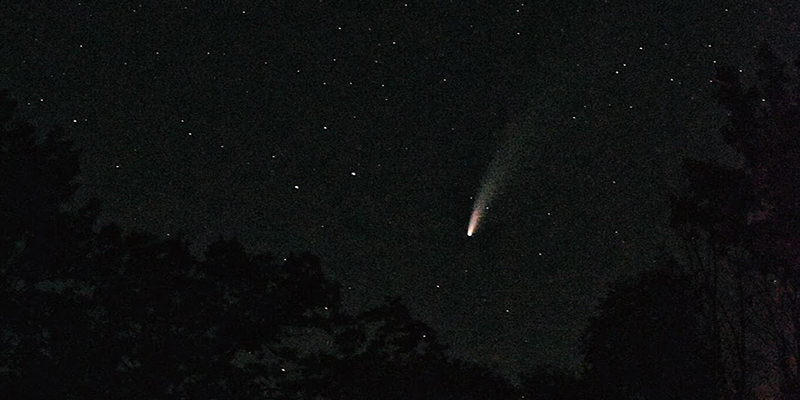How to See Comet NEOWISE Before It Disappears

Did you know that a really special comet has just entered the evening sky? NEOWISE had been approaching the sun in the morning sky over the past month. It has just emerged from behind the sun (closest approach on July 3) and has now entered evening skies for residents of the northern hemisphere. It will reach its closest point to Earth during the nights of July 22 and 23. These next few weeks are the best time to see it!
Dr. Edmund Stark of MSU St. Andrews and host of the Virtual Family Astronomy Night series offers a few tips on how to see NEOWISE — one of the best comets in many years!
“To see the comet, go to a place with a clear horizon to the northwest (no trees, etc.) and fairly dark skies in that direction, roughly two hours after sunset. NEOWISE will be visible from most of Midland, but it would be more impressive in darker skies,” said Stark. “If you’re in Midland, head north or west. Saginaw residents should head west (to avoid looking over Midland’s lights); Bay City folks should head north.”
How does it look? “I saw it easily, without binoculars, from a spot roughly 5 miles southwest of Midland, from 11:15 to 11:30 PM on July 16. (Sunset is after 9 PM these days!) NEOWISE stands head down, tail up, in the northwest below the big dipper. The tail is about 3 degrees tall by the unaided eye and longer with binoculars,” stated Stark.
Are you wondering about the name? Comet NEOWISE was discovered on March 27 by NASA’s Near-Earth Object Wide-field Infrared Survey Explorer (NEOWISE) mission. This is a satellite that scans the sky in the infrared wavelengths. Coincidentally, as part of our summer high school student fellowship, the Planet Search research fellowship team right here at MSU St. Andrews is scanning images from this same satellite right now, searching for new discoveries!
For more information on how to see NEOWISE please visit the NASA website.
Comet NEOWISE as seen north of the MBS International Airport in Freeland, Michigan. Image courtesy of Doreen Keptner.



